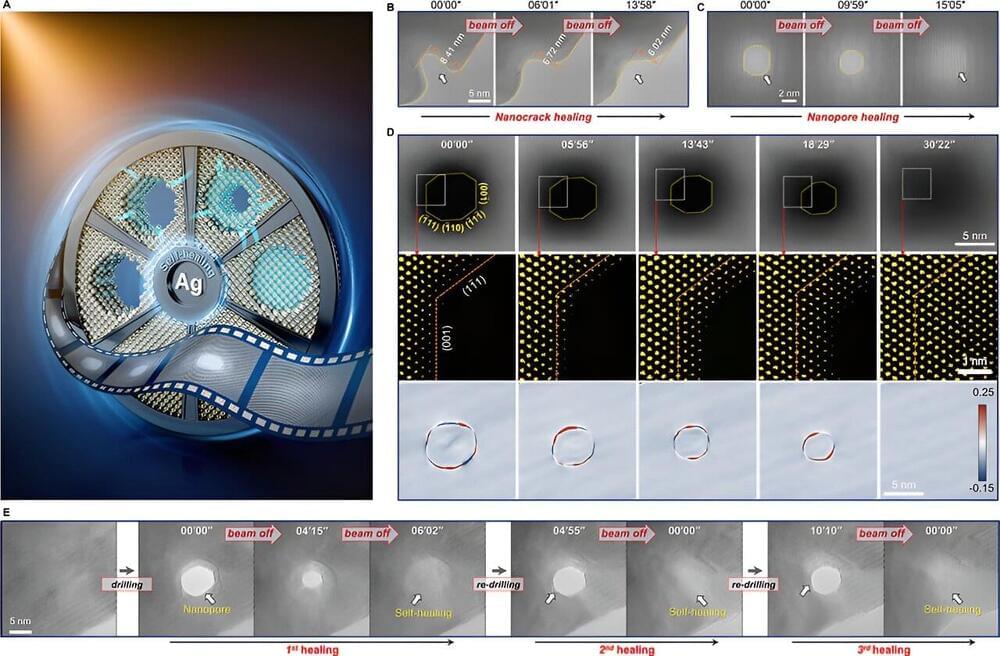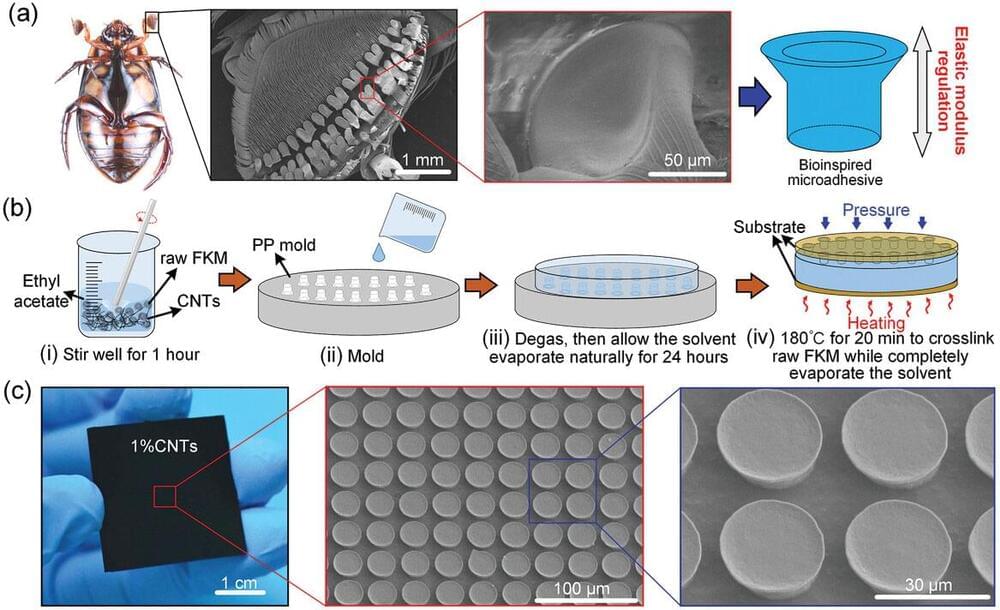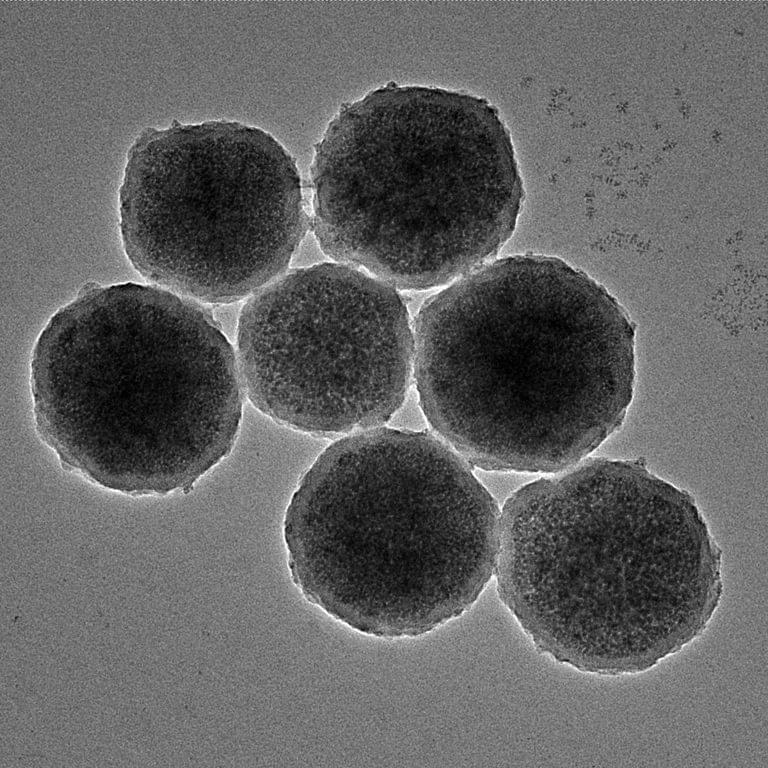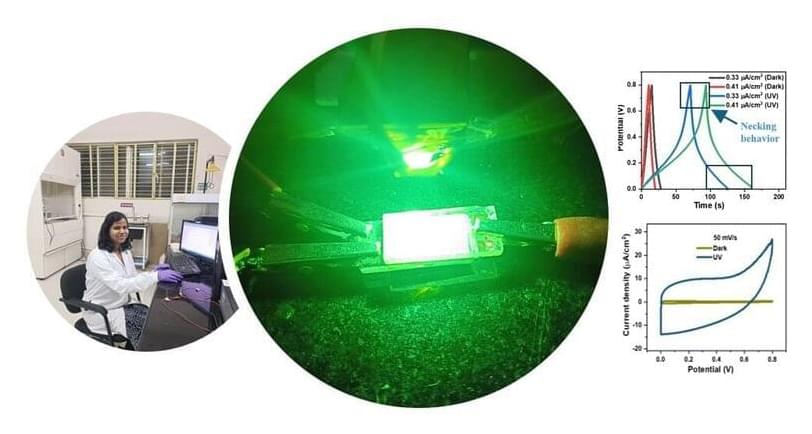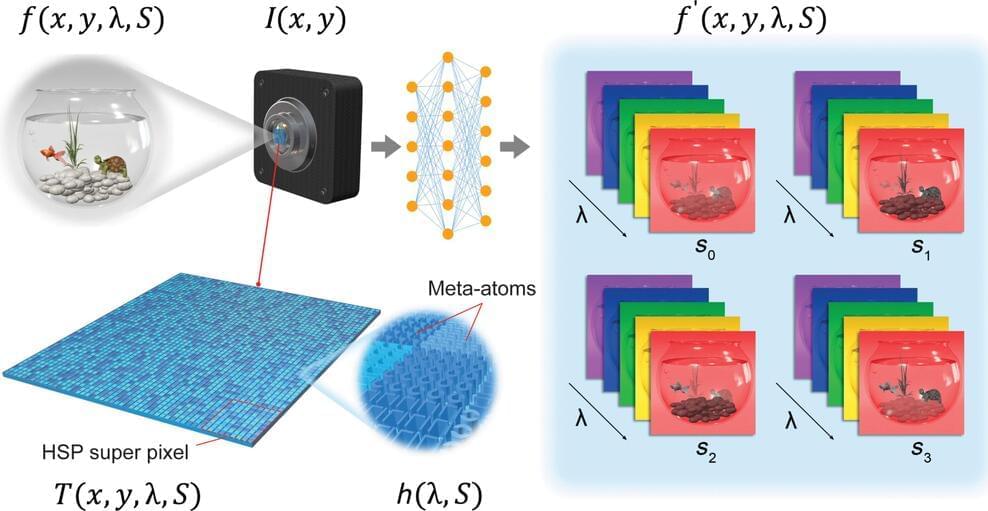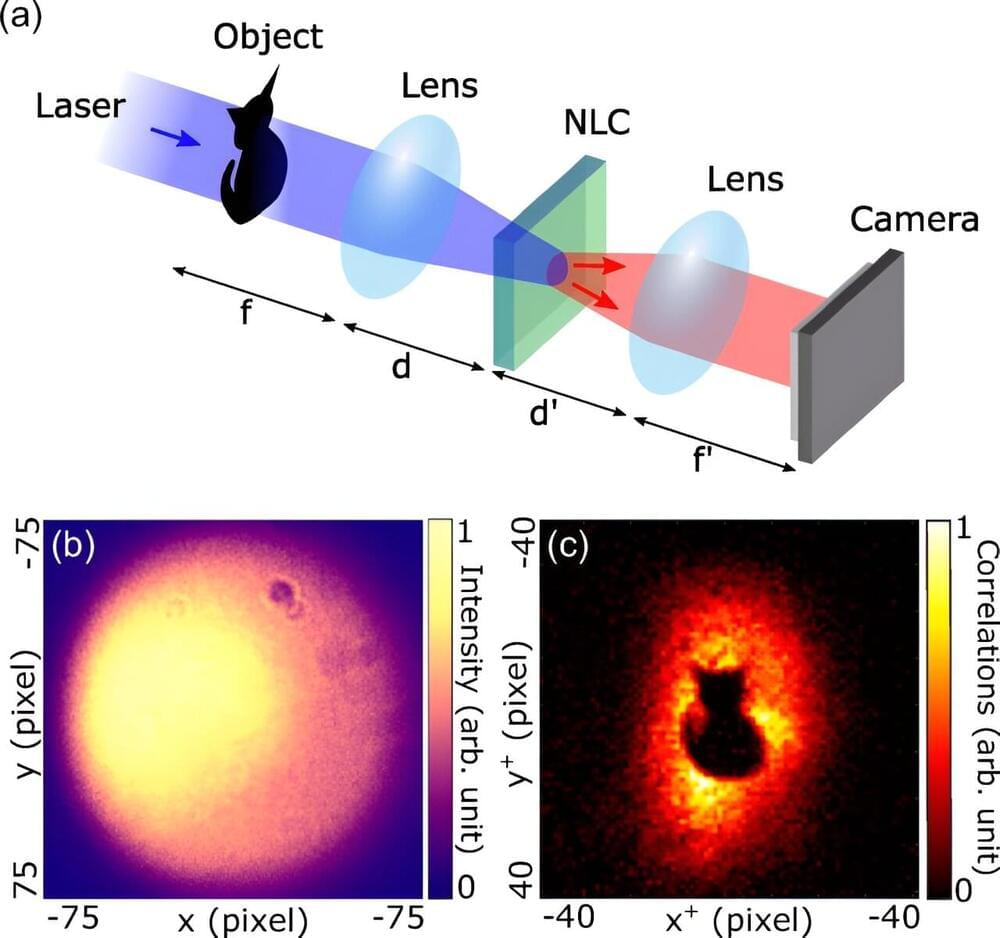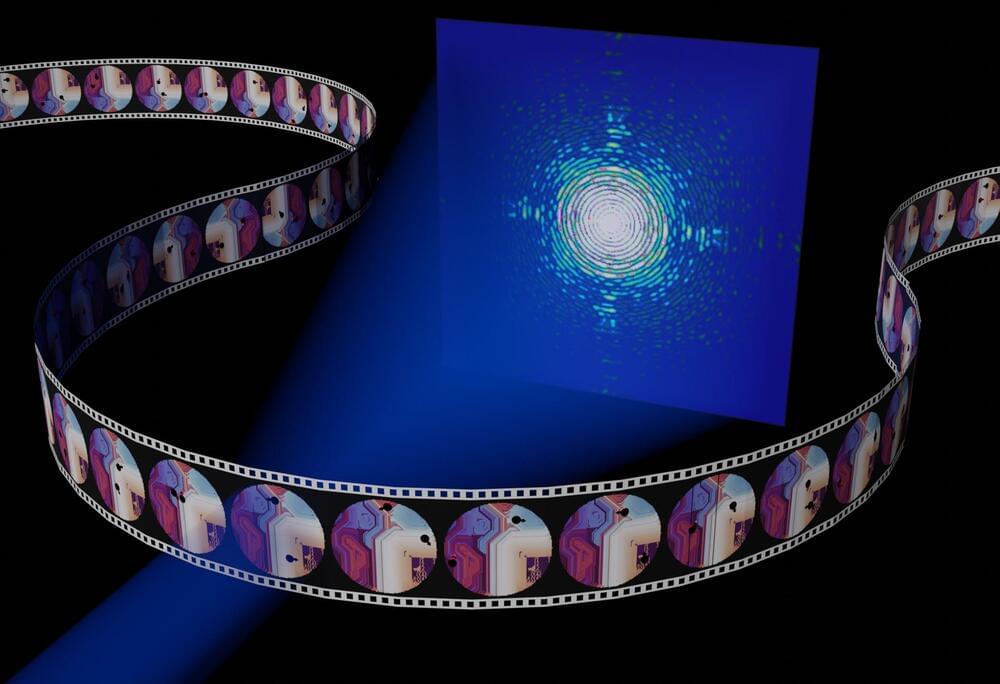Sep 9, 2024
Nanoscale silver exhibits intrinsic self-healing abilities without external intervention
Posted by Saúl Morales Rodriguéz in categories: bioengineering, biological, nanotechnology
As an innovative concept in materials science and engineering, the inspiration for self-healing materials comes from living organisms that have the innate ability to self-heal. Along this line, the search for self-healing materials has been generally focused on “soft” materials like polymers and hydrogels. For solid-state metals, one may intuitively imagine that any form of self-healing will be much more difficult to achieve.
